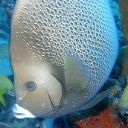- Home
- /
- Programming
- /
- SAS Procedures
- /
- Re: how to keep or specify SAS date format with SQL natural join
- RSS Feed
- Mark Topic as New
- Mark Topic as Read
- Float this Topic for Current User
- Bookmark
- Subscribe
- Mute
- Printer Friendly Page
- Mark as New
- Bookmark
- Subscribe
- Mute
- RSS Feed
- Permalink
- Report Inappropriate Content
Hello SAS folks!
When I use a natural join in SQL, the date format is lost, even if it's the same in both datasets. Is there any easy way to keep or specify the date format without specifying columns?
tiny example:
proc sql noprint ;
create table have
as select distinct *
from sashelp.pricedata (keep=date sale)
natural join
sashelp.prdsal3(keep=date state)
where date between '01jan1998'D and '30may1998'D
and state='Florida'
and sale between 300 and 350 ;
quit ;
data want ; set have ;
format date mmddyy10. ;
run ;
Ideally, I would like to have date come out as mmddyy10., so that I don't have to do an additional step to create 'want'. I'm running SAS 9.4M5 on Windows with a remote login, if that makes any difference.
Thanks so much for any help you can give me!
Wendy T
- Mark as New
- Bookmark
- Subscribe
- Mute
- RSS Feed
- Permalink
- Report Inappropriate Content
Being a bit more explicit about source and what to keep seems to work:
proc sql noprint ; create table work.have as select distinct a.date, a.sale,b.state from sashelp.pricedata (keep=date sale) as a natural join sashelp.prdsal3(keep=date state) as b where a.date between '01jan1998'D and '30may1998'D and state='Florida' and sale between 300 and 350 ; quit ;
- Mark as New
- Bookmark
- Subscribe
- Mute
- RSS Feed
- Permalink
- Report Inappropriate Content
Add the FEEDBACK option to your PROC SQL statement, get the code from the log and customize it there.
- Mark as New
- Bookmark
- Subscribe
- Mute
- RSS Feed
- Permalink
- Report Inappropriate Content
Ballardw and Reeza-
I try not to specify columns except when it's absolutely necessary. Either laziness or efficiency, depending on the situation.
Ballardw, you now have me thinking that it's the * rather than the natural join that is causing the loss of format.
Reeza, the tip on the feedback option is going to be extremely useful for me.
Thanks so much for your help!
WendyT
- Mark as New
- Bookmark
- Subscribe
- Mute
- RSS Feed
- Permalink
- Report Inappropriate Content
@WendyT wrote:
Ballardw and Reeza-
I try not to specify columns except when it's absolutely necessary. Either laziness or efficiency, depending on the situation.
Ballardw, you now have me thinking that it's the * rather than the natural join that is causing the loss of format.
Reeza, the tip on the feedback option is going to be extremely useful for me.
Thanks so much for your help!
WendyT
My guess was actually that since Date was in both sets and you did not specify which one goes into the output that even though the format in both sets was the same that the algorithms used for the combination of Select * and Natural Join just kind of "lost" the format as neither bit was told which format to apply.
I do understand the use of * even though the diehard SQL programmers seem to shudder but I'm a SAS programmer first and Sql way down the list (my experience for SQL is mostly Proc Sql).
- Mark as New
- Bookmark
- Subscribe
- Mute
- RSS Feed
- Permalink
- Report Inappropriate Content
I did a bit more reading, and found that I could add ALTER TABLE to specify a format on the date variable. I'm sure that would make the SQL diehards shudder as well. ![]()
Any other ideas?
Thanks so much for your help!
WendyT
proc sql noprint ;
create table have
as select distinct *
from sashelp.pricedata (keep=date sale)
natural join
sashelp.prdsal3(keep=date state)
where date between '01jan1998'D and '30may1998'D
and state='Florida'
and sale between 300 and 350 ;
alter table have
modify date format=mmddyy10. ;
quit ;
proc print data=have ; run ;
April 27 – 30 | Gaylord Texan | Grapevine, Texas
Registration is open
Walk in ready to learn. Walk out ready to deliver. This is the data and AI conference you can't afford to miss.
Register now and save with the early bird rate—just $795!
Learn the difference between classical and Bayesian statistical approaches and see a few PROC examples to perform Bayesian analysis in this video.
Find more tutorials on the SAS Users YouTube channel.
SAS Training: Just a Click Away
Ready to level-up your skills? Choose your own adventure.



